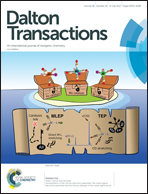Ethylene tri-/tetramerization catalysts supported by diphosphinothiophene ligands†
Abstract
Cr(III) catalysts supported by a series of diphosphinothiophene ligands have been developed, all of which, upon activation with MMAO-3A, are active for ethylene tri-/tetramerization. The effect of ligand substitution on the catalytic performance has been examined. The Cr precatalyst supported by the diphosphinothiophene ligand containing one trimethylsilyl group at the C2 position achieved a high activity of up to 686 kg (g Cr h−1)−1 with a total selectivity of up to 69% toward 1-hexene (29.5%) and 1-octene (39.5%). Two representative Cr complexes bearing the diphosphinothiophene ligand were synthesized and structurally characterized by single-crystal X-ray diffraction. Comparison of the coordination structure data of the two Cr complexes with those of an analogous diphosphine Cr complex reveals a direct correlation between the bond length of two adjacent bridging carbon atoms and catalytic activity: a shorter bond length and hence smaller ligand bite angle lead to higher catalytic activity. These diphosphinothiophene ligands featuring a fine-tuned backbone provide a model for the precise understanding of the impact of ligand variations on the catalytic performance.



 Please wait while we load your content...
Please wait while we load your content...